Moving your enterprise content to the cloud allows you to capitalize on an underused (or underappreciated) tool of Office 365: search. User experience is important and if search isn’t correctly understood by end-users, it could ultimately impact the adoption and the success of your rollout.
Within Office 365, there are three different avenues for users to find content:
- The traditional SharePoint/Office 365 search
- Utilizing Microsoft Search placed within Bing
- Searching within an application or document and within a document
All three of these do surface content within your Office 365 tenant, but each one has its own unique configuration and ability to control content. See below for an explanation of each.
SharePoint Online/Office 365 Search
This is the traditional search experience that many organizations have used with SharePoint. This experience will surface content that is stored within OneDrive, SharePoint, and Teams for the user to consume. Using the search within Office 365 has two different display possibilities; all depending on where the user is beginning their query.
Modern Search Page
This search in SharePoint Online Modern Sites is the default experience when searching for content within SharePoint Sites, Teams Sites, or Office 365 Groups. This experience is designed to be responsive and focuses on surfacing relevant content related to the search that the user inputs. The results are returned in a clean format with some simple filters available. This page cannot be configured or customized, essentially requiring users to utilize basic text search to find their intended results. The filters/refiners are simple and do not allow for custom refinable properties.
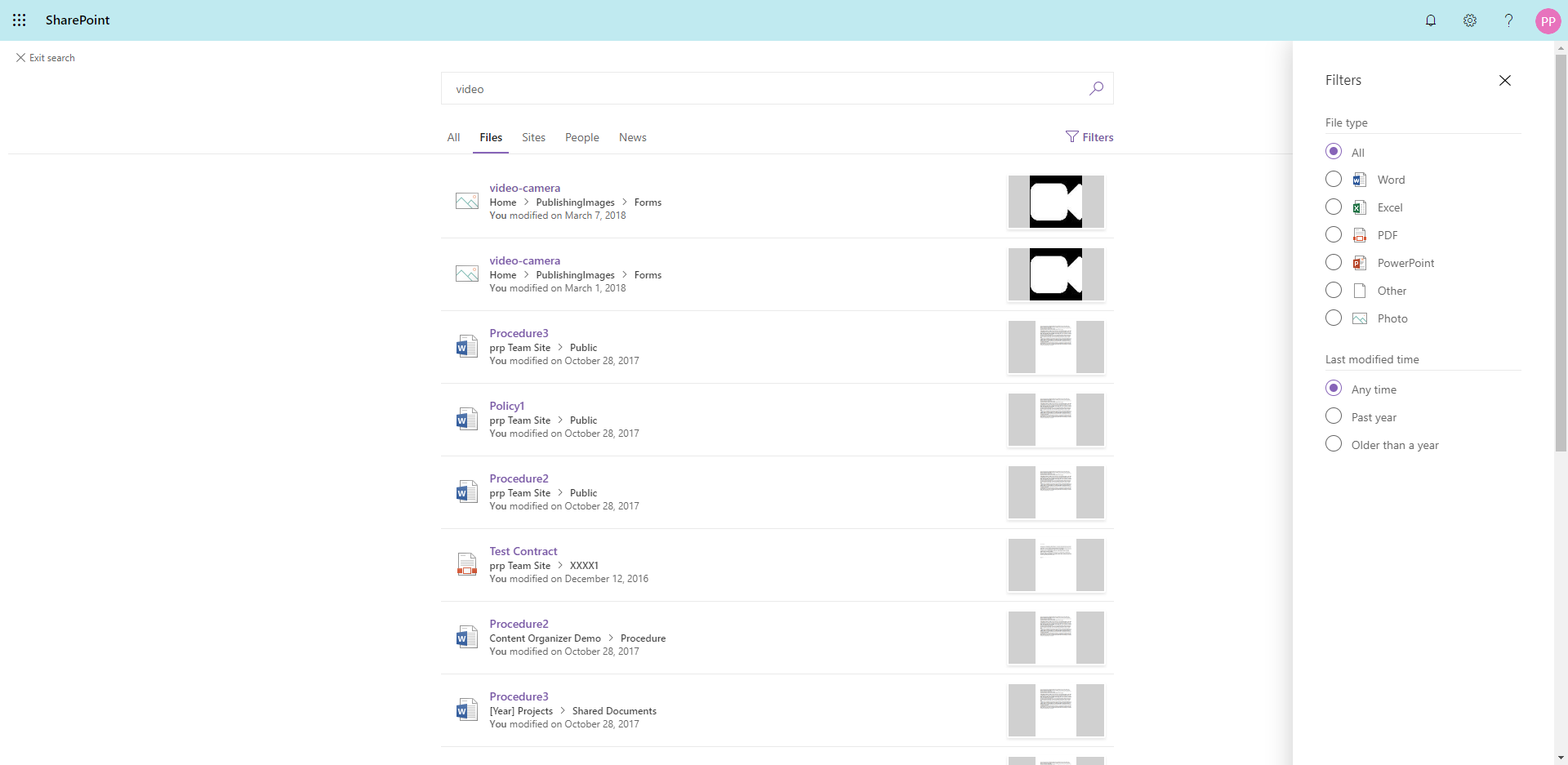
Classic Search Page
The classic SharePoint search page is still available and many organizations continue to use this. This is used when adding in custom refiners to the search experience. Using the classic experience with a modern site template will leave the user wondering why it is not a consistent experience. If your organization is adopting SharePoint for the first time, this will lead to possible user confusion with the look and feel.
In addition to the custom refiners that are available, many organizations will also utilize these classic search pages to customize the results that are returned for the users. For example, focus search results from a specific site collection or specific content type. These customizations are missing from the modern results pages.
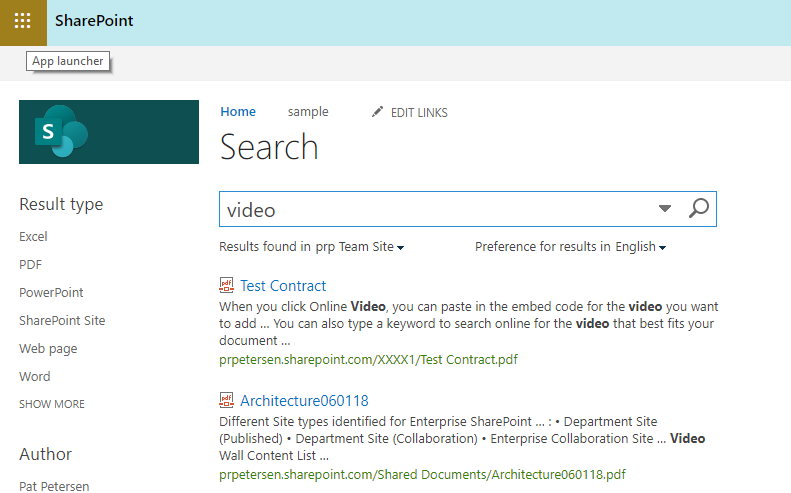
Microsoft Search
We are all guilty of performing a search for an organizational document using an internet search engine. Ultimately, we do not find organizational items because we are searching the internet. Imagine allowing users to use a search engine and surfacing content within a Bing results page. Microsoft Search is a feature that allows for your organizational content to be surfaced in a Bing Search. This does require that the user sign into Bing with their organization account and would require that the user begin their search within Bing.
For example, in the screen below, we are performing a search for the word video. We, of course, receive many public results, but we have the ability to surface Files, Sites or Conservations that match that keyword.
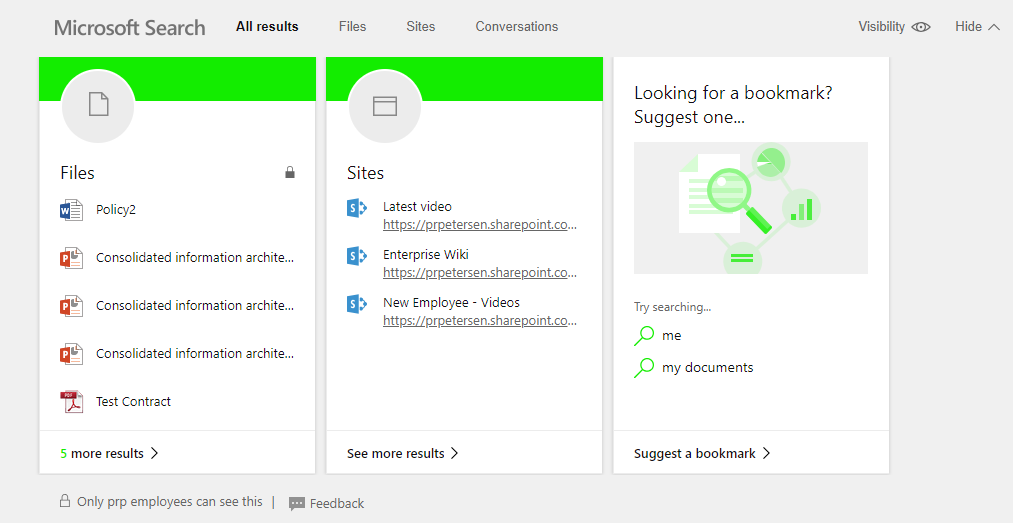
Administrators also have the ability to add specific results for keywords search. A great example of this would be if a user searched for expense policy. The top result would be a link to the expense policy on your organization’s intranet.
Client Applications
Searching for content within a client application is a feature that is becoming more prevalent as the user experience begins to evolve in client applications. With Office 2016, the client (desktop) applications received updates to the title bar, allowing users to search for shortcuts and features. As client applications continue to evolve, there continues to be an investment in allowing users to continue to work within the applications that they spend time in.
Searching in a client application is done by entering a keyword into the search box located within the title bar and selecting “See more search results for…”
![]()
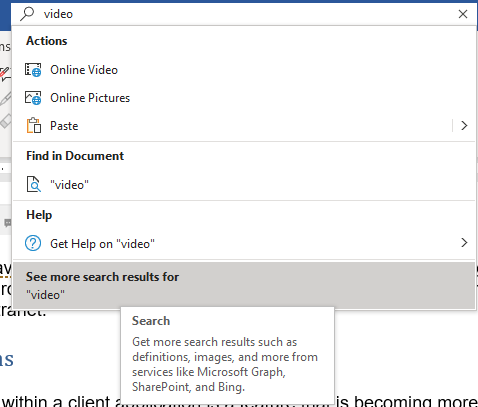
Next, when selecting “see more results,” a search pane will open on the right, allowing you to view the content or reuse the content within the application you are using, eliminating the need to perform a search directly in SharePoint.
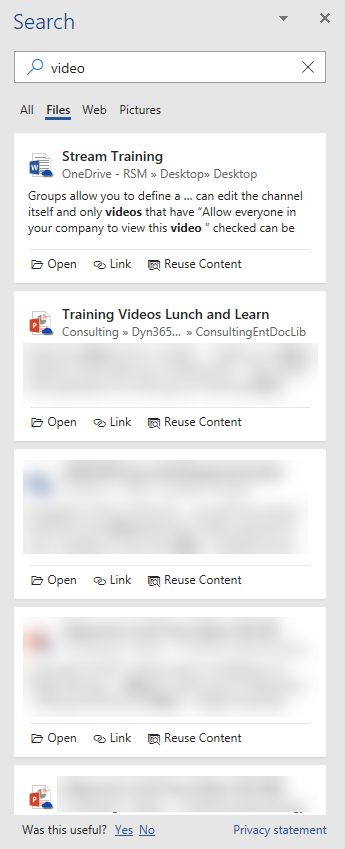
In conclusion, search can be a complicated feature of Office 365, but with Microsoft’s investment in bringing the results to the applications and some training, end-users will benefit from a search experience that is adaptable and focuses on finding content quickly.

 RSMUS.com
RSMUS.com



